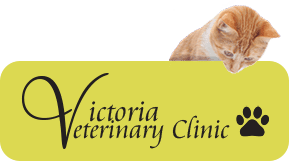Holiday Food Items That Could Cause Problems For Your Pet: Alcoholic beverages, coffee (grounds, beans, chocolate covered espresso beans), fatty foods, onions and garlic (and their family members leeks, chives, and shallots), salt, tobacco products, grapes and raisins, and macadamia nuts all should be avoided. Ingestions could result in a range of complications from minor gastric distress to severe neurological effects, kidney failure or anemia.
PLANTS: Lilies (such as Tiger, Easter, Stargazer or Day) that may be found in holiday flower arrangements could cause deadly kidney failure in cats. Poinsettias, Holly and Mistletoe, if ingested, can be irritating to the mouth and stomach, and may cause vomiting, nausea, diarrhea, and lethargy. Mistletoe, however, does have the potential to cause cardiovascular problems if ingested in sufficient quantities.
HAZARDS AROUND THE CHRISTMAS TREE:
- Christmas tree water may contain fertilizers, while stagnant tree water can be breeding grounds for bacteria. If ingested, either can cause stomach upset which can also lead to vomiting, nausea, and diarrhea.
- Electric cords– Cover up or hide electric cords and never let your pet chew on them; this could result in electrocution.
- Ribbons or tinsel can get caught up in the intestines and cause intestinal obstruction.
- Batteries contain corrosives. If ingested they can cause ulceration to the mouth, tongue, and the rest of the gastrointestinal tract.
- Ornaments can cut the tissues of the gastrointestinal tract if ingested, and glass ornaments present puncture hazards if broken.
OTHER WINTER HAZARDS:
- Antifreeze has a pleasant taste. Unfortunately, very small amounts can be lethal. As little as one teaspoon of antifreeze can be deadly to a cat; less than four teaspoons can be dangerous to a 10-pound dog. Thoroughly clean up any spills, store antifreeze in tightly closed containers and store in secured cabinets. Automotive products such as gasoline, oil and antifreeze should be stored in areas that are inaccessible to your pets. Propylene glycol is a safer form of antifreeze. Low Tox™ brand antifreeze contains propylene glycol and is recommended to use in pet households. If you think your pet has consumed antifreeze, contact your veterinarian immediately!
- Liquid potpourris are popular household fragrances commonly used during the holiday season. Exposure through direct ingestion, following grooming, or by rubbing against leaky bottles or simmer pots containing the potpourri, or from spilling the containers upon themselves can result in severe oral, dermal and ocular damage.
- Ice melting products can be irritating to skin and mouth. Depending on the actual ingredient of the ice melt and the quantity, signs of ingestion would include excessive drooling, depression, vomiting or even electrolyte imbalances. Have fresh water or damp clothes available to rinse or wipe paws clean.
A special word about chocolate and rising bread dough:
- Chocolate contains theobromine and caffeine. Unfortunately, dogs are sensitive to the effects of these compounds. The general rule is the more bitter the chocolate, the more toxic it could be. In fact, unsweetened baking chocolate (393 mg) contains almost seven times more theobromine per ounce as milk chocolate (44-56 mg). Depending on the amount and type ingested, effects seen with chocolate ingestion can include hyperactivity, increased heart rate, tremors, diarrhea, increased thirst, increased urination, lethargy and potentially death. Early treatment is extremely helpful with chocolate poisoning.
- Ingestion of rising bread dough can be life-threatening to pets. In addition to continuing to rise in the stomach (possibly expanding to several times its original size), the process of rising dough produces ethanol, which may accumulate to toxic levels. Signs seen with bread dough ingestion may include severe abdominal pain, bloating, vomiting, incoordination, and depression. Again, early treatment is extremely helpful.
With thanks to the ASPCA Poison Control Centre (1-888-4ANI-HELP, http://www.apcc.aspca.org) and www.veterinarypartner.com for the content information.





